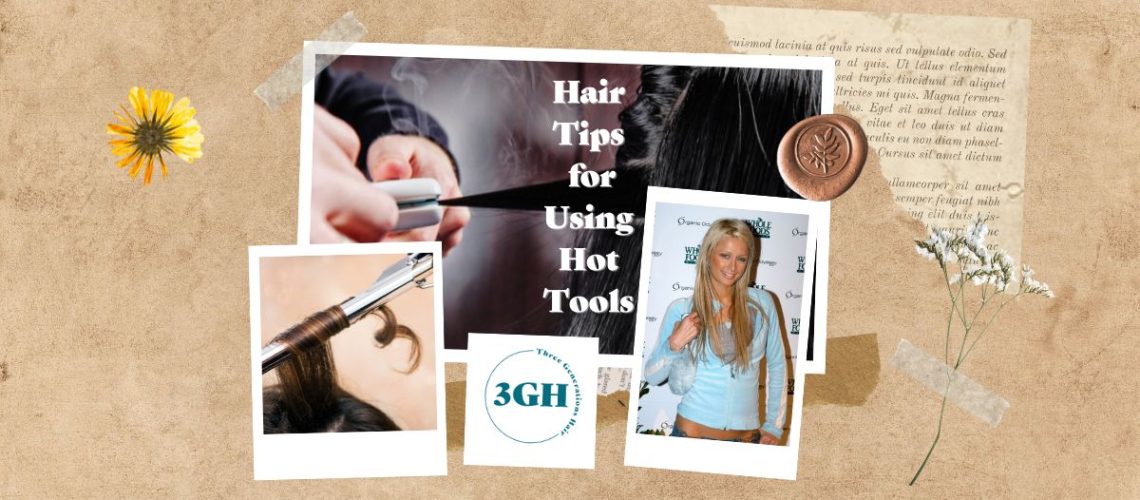Hair Tips for Using Hot Tools
Back in 2000 when flat irons became trendy, lots of people literally fried their hair. We did not know the right way to use it, but we wanted that pin straight hair look. Even if it meant that our ends where straggling and thin. Every mall had multiple flat iron stands and there was a line to get one.
hair tips for using hot tools
The first straightening comb was invented in 1872 by Marcel Grateau. In 1909 Isaac K. Sheri patented the first hair straightener composed of two flat irons that are heated and pressed together. Being invented a considerably long time ago, you would think that by now we figured out how to prevent damaging our hair from flat irons.
Hot tools definitely allow us to get the best results and have our hair looking gorgeous. It is very convenient because we can achieve red carpet look quick and all in the comfort of our own home. Even though hot styling tools are super easy to use, there are still important steps to take so you won’t damage your hair. I see lots of mistakes people make when they use hot tools to style their hair. Even when I watch a tutorial on social media I can tell they are not taking small steps to prevent hair damage. Heat damages hair. I would like to go over and share some tips on how to prevent as much possible damage on your hair from any hot tools you choose to use.
1. Dry it
It’s very important that your hair is dry and make sure it’s 100% dry. This is arguably the most important step. Especially if you have thick hair, sometimes it can be hard to tell if your hair is 100% dry at the roots. If a hot tool, like flat iron or curling iron, is used on a damp hair, not only it will be hard to accomplish desire style, but it would also damage your hair. Nothing can protect this kind of damage, not even heat protectant. Remember, your hair is at is most fragile when wet.
2. Heat protector
Heat protector is like a sunscreen for your hair. Lots of brands also offer hair heat protection with nourishing and vitamins for your hair. However, don’t be fooled because there isn’t “one for all” heat protector. If your hair is fine, then lighter/water base product would work best. If your hair is textured, then more moisturizing and oil base heat protectors are best. Only recommendation I have regardless which heat protection you choose, make sure you dry your hair after applying the product. Often the product wets the hair and we feel safe to use the stylist tool right away.
3. Temperature
Just because the hot tool can go up to 450 Fahrenheit’s doesn’t mean you should. Highest heat setting will leave your hair burnt and damaged beyond repair. Instead, turning the heat down to 320-350 degrees and style in smaller sections. This produces faster and better results. The heat will penetrate through the hair faster, so you would only need to go through once, again protecting your hair from frying.
My temperature recommendations based on hair type:
Fine hair hot tool should be around 200-300 degrees.
For medium hair – 300-350 degrees.
For thick hair I recommend above 350 degrees.
Color treated hair should be below 350 degrees so it would not fade out your color.
4. Mask
I am a strong believer in recovering hair with deep conditioner or mask. It’s like facial for your hair. It will help recover lost moisture and replenish your hair. After stressing your hair out with hot tools, I think it deserves some recovery. Doing a hair mask once a week will help to recover some proteins and moisture that gets lost when using hot tools.
Final thoughts
I strongly believe that our hair is part of our identity. You can express yourself just by changing it. Heat does wonderful things to our hair. We can have it curly even though we have straight hair or opposite. Why not to try keeping it strong and healthy? Using hot tool correct way will minimize potential hair damage. Prepping your hair with heat protectant before styling will be one of the most important steps.



6 Responses